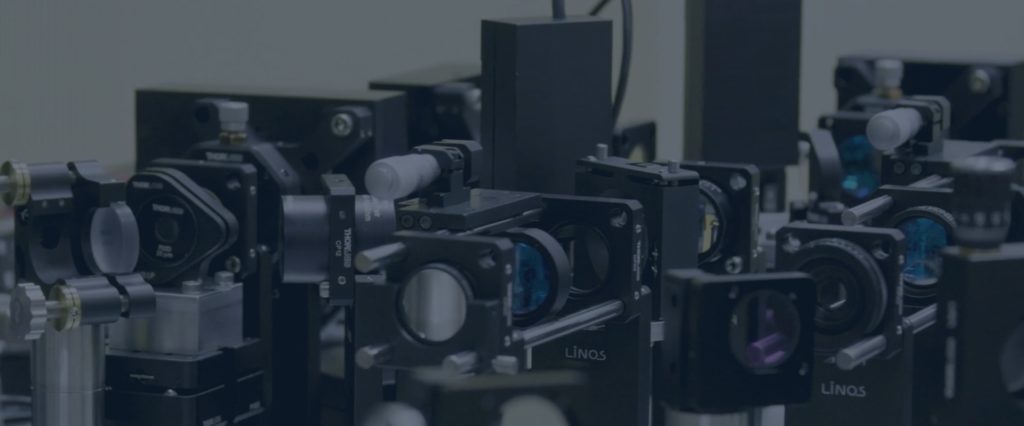It has been quite some time since our last blog post due to a great deal going on at BMC! Alongside some new product releases, we recently made a few adjustments and updates to our ophthalmic imaging instrument, the Adaptive Optics Scanning Laser Ophthalmoscope (AOSLO) which we are releasing early next year.
This next-generation instrument allows in vivo retinal imaging on a cellular level and is currently undergoing beta testing at the Beetham Eye Institute at Joslin Diabetes Center, led by Dr. Jennifer Sun and her team. There it is being used to directly quantify features such as cone density, microaneurysm size and measure blood flow through the microvasculature in the retina. By pairing a Scanning Laser Ophthalmoscope (SLO) with advanced Adaptive Optics, it offers the advantage of imaging the retina at a resolution 2-3 times that of a standard SLO.
The AOSLO is also capable of measuring various properties of retinal cone physiology. Due to its enhanced imaging and software, it enables evaluation of the following attributes:
- Cone Density
- Nearest Neighbor Distance
- Voronoi Tessellation Tile Area
- Effective Radius
- Packing Factor
The AOSLO’s ability to measure such features allows early stage detection of visual decline due to diabetes. This can be identified by the decrease in cone regularity, cone mosaic changes, cone reflectance and a decrease regularity of cone spacing. This function of the AOSLO can help determine early treatment plans for patients and generate further investigative studies.
When testing out the AOSLO at Joslin, we found something very interesting out about our CEO, Paul Bierden. The pictures below depict his own retina, discovering that he has a microaneurysm! This was unexpected news, since normally it would be undetectable by any other retinal imaging systems. 30% of the microaneurysms imaged using the AOSLO at Joslin were not visible in fundus photos. The AOSLO is able to accomplish this by evaluating the vascular and neural retinal planes in vivo with cell-scale resolution. The pictures below also point out the microaneurysm attributes that can be measured. They are:
- Dimension
- Presence of lumen clot
- Wall reflectivity

Lastly, the AOSLO is able to measure small-vessel blood flow. This is done with the help of its enhanced imaging qualities, instrument optimization and post-processing software. By stopping a horizontal scan over a blood vessel, it can measure the blood velocity by tracking the moving erythrocytes over a scanning line. With this information, researchers can produce a blood velocity profile for retinal vessels. See the video below to see how it’s done!
If you have any interest in using the AOSLO, let us know! Please give us a call and let us know about your research. We are accepting orders for the new instrument and are open to collaborative grant applications to secure funding. If you are interested in seeing the AOSLO in action, we are setting up appointments now for the next few months. We hope to hear from you soon!
Check more
Related Articles

Defense TechConnect Conference and Expo: Fun in the Sun with the MRR
Last week I was fortunate enough to be able to parade BMC’s Modulating RetroReflector (MRR) in front of multiple audiences affiliated with the Defense community at the Defense TechConnect (DTC) Conference and Expo in Tampa, Florida.
# Adaptive Optics Scanning Laser Ophthalmoscope 11.01.2018
Read more
MiFoBio 2018: AO Microscopy in Action
Recently, Boston Micromachines sponsored MiFoBio (Functional Microscopy in Biology), an event that brought together the microscopy community, academics and professionals alike, to attend courses and workshops that explored the understanding and current trends of biological imaging.
# Adaptive Optics Scanning Laser Ophthalmoscope 10.16.2018
Read more
